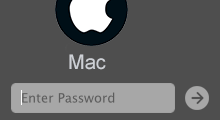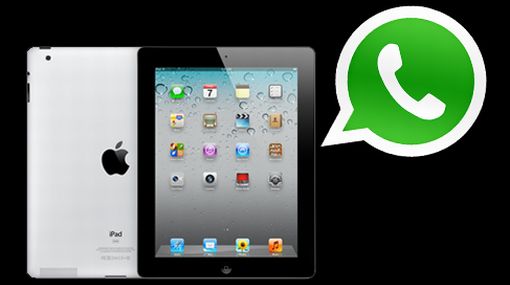Purchased and downloaded Photoshop Elements11.file for download said it was for Mac/Windows. I am running Mac OS (10.7.5). Downloaded two files (one is a.exe file the other a.7z file). No DMG file (typical max install file name is present) to complete the install. Attempting to click either. Can you install.dmg file on iPad Pro? IOS has no idea about what to do with that disc image. Why do you think a mac app can be installed to your iPP?dmg is not an -application-, it is a package that commonly -contains- an application and an installer, as an example. Are you working with MC, or is this forum something you choose out of hope. Download the tool from any software distribution site. Install it and run the tool with right admin privileges to exercise all tool benefits. Next insert your blank USB disk. Click on 'Burn' option to first choose the target DMG file from computer directory. A new PowerISO dialogue box would open up.
The .dmg disk image is a particularly tricky format. The main reason for this is that a .dmg file must be mounted by the macOS file system before the installation files contained within it can be examined and installed.
For this reason, Addigy recommends that you remove .pkg installations from within the .dmg and upload it individually when at all possible.
However, sometimes the software will require installation from within the .dmg volume. In this case, you will need to generate your own Installation script. The other steps for this Smart Software should mirror the .pkg installation described in our article Creating Smart Software.
In our example, we’ll be installing Firefox. Specifically, my Firefox .dmg has a '.app' file inside of the .dmg drive.
I've entered the basic information of the Smart Software item and already uploaded the .dmg file.

All that's left are the scripts.
To install from a .dmg we need to accomplish these three major steps:
1) Mount the .dmg file.
2) Install files and software from the mounted volume.
3) Unmount the .dmg file.
Steps 1 and 3 are largely the same for every .dmg installation, all that needs to be changed are the paths for the commands to work.
Here's the InstallationScript that performs all these steps:
Note: Since I’ve used Firefox for my example, be sure to change the directory names to match your Smart Software and file names.

If you're unsure where to get the Smart Software directory, you can find it at the top of the Edit Software page.
Don't forget to put the .dmg file path in after the Smart Software name, and if there are spaces in the directory, be sure to add quotes just like the example below.
Example:
The Condition script for this software is quite simple. It checks to see if the software we installed is in the correct folder.
The ConditionScript for your Smart Software will likely be very different, but even a simple script similar to this which checks for existing files can serve as a perfectly good Condition.
If you'd also like to ensure the removal of your Smart Software when a device is removed from the appropriate policy, you may want to add a Removal script to the Smart Software payload.

If you have an Addigy account and have additional questions, you can create a ticket by emailing support@addigy.com.
Alternatively, you can submit a support request within Addigy.
A .DMG file is a container file commonly used to distribute applications for Mac OS X. Installing software from one of these requires you to mount the image and move its contents to your computer’s “Applications” directory.
One of the most common mistakes I see among new Mac users is fumbling with how to install and open .dmg files or new software. The process for installing new applications on your Mac can be confusing at first because it differs greatly from Windows’ software installation process. Nevertheless, the Mac method of installing software is actually quite simple and intuitive once you are accustomed to it. If your desktop is littered with DMG files and white “drive”-looking icons, read on!
Contents
What are .DMG Files?
DMG stands for Disk Image, and is a format commonly used to distribute files and applications among Apple computers. A DMG file is like a virtual DVD or hard drive. They can be “mounted” on your Mac in order to work with their contents, or even burned to an actual physical disc.
In order to understand the concept of a DMG disk image, think of a storage volume such as a CD, DVD, hard drive, or external drive. A DMG file is like one of these devices in that it serves as a means to encapsulate documents, images, software, and other files. The difference is that with a DMG, there is no physical storage medium. There is only the DMG file, which can be written to a hard drive, burned to a CD or DVD, or sent over the Internet.
In order to work with the contents of a DMG file, you must mount the the disk image to your system. This may sound daunting, however “mounting” a DMG file with Mac OS X is no more complicated than double-clicking it’ icon. The operating system will load the load image and place a new icon both on your desktop, and in the sidebar of the Finder. The icon will have the same name as the DMG, and you’ll be able to browse through its contents like any other folder.
Once you are done working with the contents of the file, you will want to remove or “unmount” it from your system. Do this by opening the Finder and clicking the eject icon next to the virtual drive’s icon. Or, go to the Desktop, click once on the icon, and press CMD+E.
Also Useful:Best Gaming Laptops Under $2000
How to Install and Open .dmg Files on a Mac
Software installation with Mac OS X is very different than in the Windows world. On a Windows PC you run an installer, tick off a few checkboxes, and wait for the progress meter to reach completion. There usually is no such “installation wizard” on a Mac &emdash; you simply drag and drop the program into your computer’s “Applications” directory. The trick is that most Mac applications are distributed as images called DMG files, and many new Mac users end up running applications directly from the image instead of installing them to the “Applications” directory.
Install Dmg File From Terminal Mine Block
Enough explanation, here’s how to install an OS X app from a DMG file:
- Find the downloaded file, which usually ends up in your Desktop or Downloads folder.
- Double-click the .DMG file to mount it. A new Finder window showing its contents should appear.
- If the window also contains a shortcut icon to “Applications”, drag and drop the app onto the shortcut.
- If not, double-click the mounted volume on your desktop and drag the app icon from there to the “Applications” icon in the Finder sidebar.
Further Explanation
Alright, that was the abridged version. Here’s the long version. I’ve just downloaded the DeskLickr application, and the DeskLickr_1.2.dmg is sitting on my desktop. I double-click it and a new icon labeled “DeskLickr 1.2” appears on my desktop. Here’s what my desktop looks like at this point:
Since most of the time a new Finder window also pops up when the image is ready for use, this one is now sitting on my desktop:
Different applications are going to show you slightly different Finder windows. Each application’s designers like to add their own artwork. Glitter aside, most applications are trying to tell you the same thing. See the arrow pointing from the DeskLickr icon to the “Applications’ shortcut? It’s telling you to drag and drop the icon into that folder. Once you’ve done so, the app will be installed.
How To Run Dmg Files
If a program doesn’t provide a shortcut to the Applications folder, you’ll need to pop open a new Finder window. Press CMD+N to open a new window, then drag the program over to “Applications” in the left-hand side of the window.
Also useful: How to CTRL + ALT + DEL on a Mac
House Cleaning
Once the new program is installed it’s time to do some house cleaning. You no longer need the disk image you downloaded, so follow these steps:
- Close any Finder windows that have been left open.
- Eject the disk image (not the .DMG file). Click on its desktop icon, then press CMD+E.
- Delete the .DMG file by dragging it to the trash.
That’s it! Your new Mac application is ready to use. But wait…
Bonus Tip: Add Your New Application to the Dock

Install Dmg File From Terminal Mine Location
I knew you were going to ask, so I figured I would cut you off at the pass. In order to add the new application to the dock, follow these steps:
What Is A Dmg File
- Open up a new Finder window.
- Click on “Applications”.
- Locate your new program’s icon.
- Drag the icon to your Dock, and drop it wherever you like.
Also Check:Cool Fortnite Names of 2020
